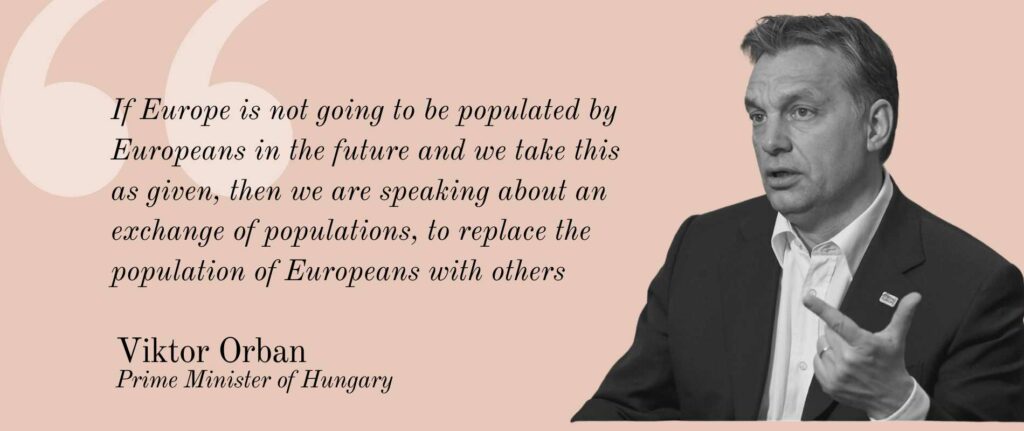An IMGW News Report
According to researchers, countries need a birth rate of 2.1 children per woman to maintain a stable population. However, in Europe, the figures are far below that and could result in “staggering social change”, according to medical journal The Lancet (2024).
No country in the EU has a birth rate above 2.1, leading some politicians to fear that the number of young people will begin to drop like a stone. Italy’s Prime Minister Giorgia Meloni has now mounted a family-first campaign, backed by the Pope, to try and boost the number of births to half a million annually within a decade.
“The lowest fertility rates in 2022 were recorded in Malta (1.08), Spain (1.16) and Italy (1.24). Other countries were somewhat in between, with Sweden reporting a fertility rate of 1.53, Austria 1.55, Germany 1.46, and Switzerland 1.39.”
The EU’s statistics and data service, Eurostat, predicts that by 2100, without any interventions, those aged 65 and over will account for 32% of the population, compared to 22% today. Unless European birth rates increase, The Lancet claims, “Reliance on open immigration will become necessary to sustain economic growth.”
A recent report by The Lancet says Western countries will be forced to open borders to migration if they are to survive. The silhouettes of children are seen on synthetic grass as they play with their hands at a garden in Barcelona, Spain, where the birth rate is set to fall the most sharply in Western Europe, February 26, 2024 [Nacho Doce/Reuters]
The Black Death – the pandemic of bubonic plague which swept Europe and Asia for about five years in the mid-1300s – is widely believed to have reduced the global population by one-third. But almost 700 years after this infamous pandemic became the last worldwide phenomenon to reduce global population levels by such a huge amount, a new report has warned of the “staggering social change” posed by plummeting fertility rates which could also see the number of humans on our planet, currently standing at more than eight billion, fall within decades.
Global Fertility Decline
“If Europe is not going to be populated by Europeans in the future and we take this as given, then we are speaking about an exchange of populations, to replace the population of Europeans with others”
Victor Orban – Hungary’s Prime Minister
According to a recent global fertility study published in the international medical journal, The Lancet, “Fertility is declining globally, with rates in more than half of all countries and territories in 2021 below replacement level.” Natalia V Bhattacharjee, one of the report’s co-lead authors, said the “implications are immense” – particularly for countries in Western Europe, which are currently seeing massive unrest over migration levels.
“These future trends in fertility rates and live births will completely reconfigure the global economy and the international balance of power and will necessitate reorganising societies,” she stated. The study suggested that Western Europe, where the far-right has long made the issue of falling fertility a cause célèbre, faces a particularly steep fall in births in the coming decades and may have to reopen itself to unfettered migration to address the problem.
The Lancet Report
The March report, titled “Global fertility in 204 countries and territories, 1950-2021, with forecasts to 2100,” was compiled by a team of international researchers at the University of Washington’s Institute for Health Metrics and Evaluation (IHME). It based its predictions on the widely accepted premise that countries require a total fertility rate (TFR) of 2.1 children per woman in order to ensure a broadly stable population.
However, in Western Europe, TFR is forecast to drop from 1.53, where it was in 2021, to 1.44 in 2050, and drop again to 1.37 in 2100, according to the report, which predicts that Spain will suffer one of the steepest declines – to 1.11 in 2100. The team also predicted that only six countries in the world – Samoa, Somalia, Tonga, Niger, Chad and Tajikistan – would still have a TFR above 2.1 by the turn of the next century.
The lowest fertility rates in 2022 were recorded in Malta (1.08), Spain (1.16) and Italy (1.24). Other countries were somewhat in between, with Sweden reporting a fertility rate of 1.53, Austria 1.55, Germany 1.46, and Switzerland 1.39.
Falling Birth Rates
Falling birth rates, say experts, are the result of greater female participation in the workplace, as well as increased access to contraception. According to bodies such as the UN, more working women make for growing economies. As macroeconomist Philip Pilkington wrote in a January edition of the UK’s Daily Telegraph: “As wealth in a country increases, its birth rate falls – as surely as night follows day.”
Falling birth rates have also been attributed to advances in medical science meaning that families do not have to produce as many children to ensure enough survive as they might have done in past centuries.
Impact on Western Countries
If the findings in The Lancet are correct, then the likes of the United Kingdom, where the birth rate is predicted to fall to 1.38 in 2050 and 1.3 in 2100, from 1.49 in 2021, will become reliant on immigration for the next eight decades or more if it is to sustain its population size, currently just under 68 million.
As fewer babies are born and medical advances mean people are living for longer, Western Europe is facing the prospect of a rapidly ageing population. With fewer young people generating wealth to balance the rising costs of sustaining the elderly, countries could face serious economic challenges in the decades ahead. The Lancet report, which indicated that sub-Saharan Africa would account for one in every two children born in 2100, therefore also predicts that high-income countries will struggle to maintain economic growth.

Necessity of Structured Migration Policies
The only obvious solution, experts say, is to allow more migration from countries with younger populations. Eventually, yes, said Bhattacharjee. “Once nearly every country’s population is shrinking, reliance on open immigration will become necessary to sustain economic growth.” She added that “sub-Saharan African countries have a vital resource that ageing societies are losing – a youthful population.”
However, it is crucial that the EU adopts structured migration policies rather than reactive measures. Effective and humane migration policies can ensure a smooth integration of immigrants into European societies, addressing both demographic challenges and social cohesion. Structured policies would also help mitigate the fears and resistance often stirred by abrupt changes in immigration levels.
Current Political Climate and Migration
The idea of structured migration is challenging in today’s political climate. In the UK, for example, British Prime Minister Rishi Sunak has made curbing immigration a top priority as his Conservative Party government waits for its long-awaited policy of sending asylum seekers to Rwanda to be signed into law.
In France, President Emmanuel Macron sought to implement a “hardline” immigration bill after it was passed by the French parliament in December last year. However, in late January, the country’s constitutional court, which examines new laws to ensure they are in keeping with the tenets of the French constitution, struck down large parts of the bill, including a proposal to restrict migrants’ access to welfare benefits, prompting Macron to promulgate a more watered-down version of his bill. Despite this, many observers contend that the new law still represents a hardening of French immigration rules.
Far-Right Concerns
Enthusiasts of the far right have been concerned with the idea of declining birth rates since long before The Lancet published its study. Indeed, ‘the Great Replacement’ conspiracy theory – which was first popularised by right-wing French philosopher Renaud Camus in his 2011 book, ‘Le Grand Remplacement’ – promotes the false and racist idea that falling birth rates in Western societies are part of a “plot” which could lead to whites being largely “replaced” by people of other races.
Hungary’s far-right, anti-immigration prime minister, Viktor Orban, has also been accused of tapping into ‘the Great Replacement’ theory in his own bid to advocate for improving birth rates in Europe, including in his own country. In 2019, the year he announced a series of family-friendly policies in Hungary like housing subsidies in an attempt to drive up birth rates, Orban rejected the notion of 21st-century Europe being “populated by non-Europeans”.
“If Europe is not going to be populated by Europeans in the future and we take this as given, then we are speaking about an exchange of populations, to replace the population of Europeans with others,” he said.
If you’re interested in related articles, we suggest reading the following IMGW News Reports:
- Europe Braces for Market Turmoil as Far Right Rises in France
- Wealthy Foreigners Plan to Leave UK as London Drops to 5th Wealthiest City Globally
- June 2024: A Game-Changing Month for Citizenship-by-Investment Programmes in Europe. Here’s Why…
- UK Elections: How will Immigration Caps effect the New Political Landscape?
- Desperate for Millennial Talent, Germany Introduces ‘Chancenkarte’ for Job-Seeking Migrants






